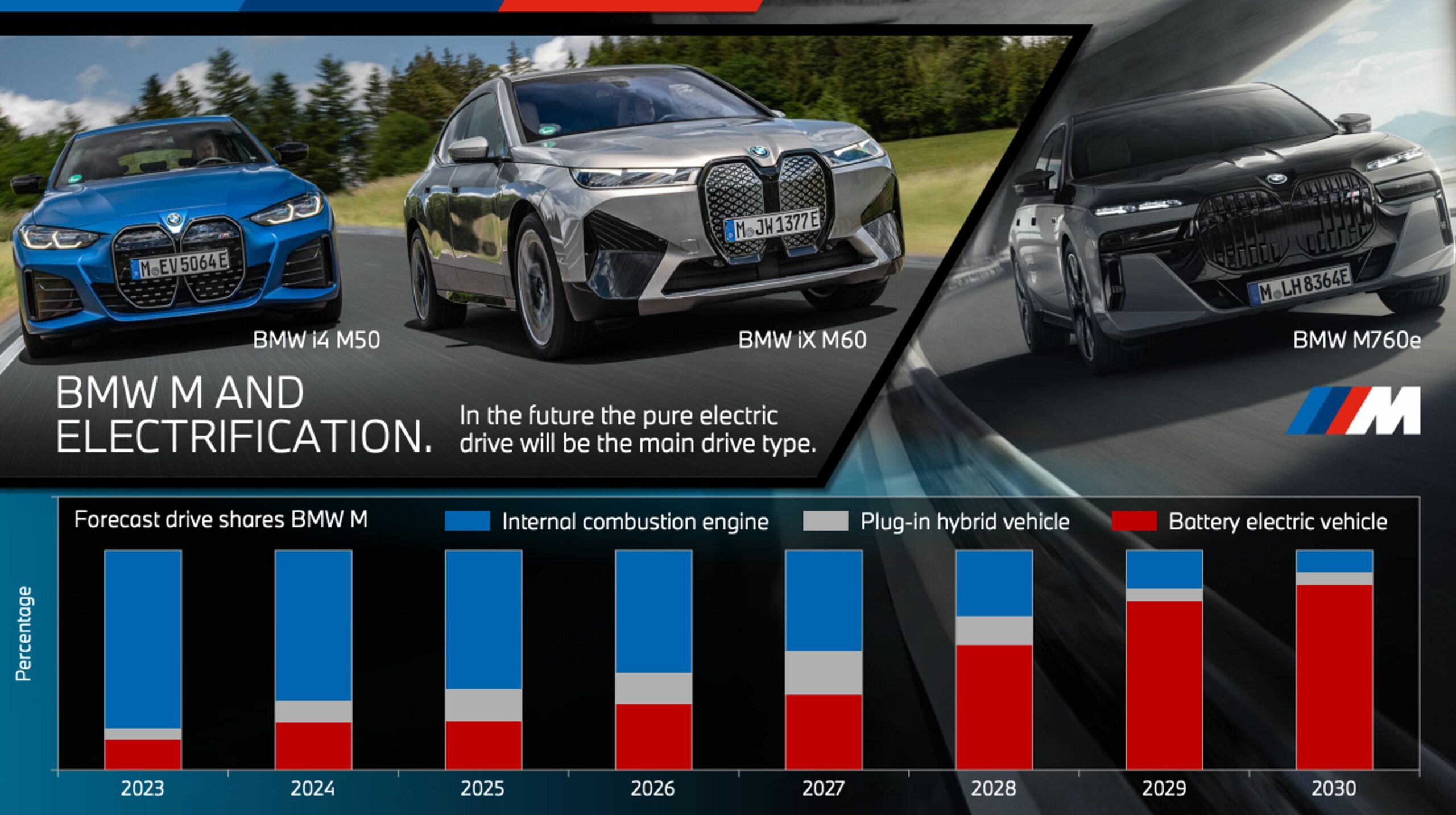In case you haven’t heard, the i4 M50 was the best-selling product from BMW M last year when a record number of vehicles were delivered to customers. Yes, love it or loathe it, Munich’s performance division also takes into account M Performance cars rather than only the fully fledged M models. With that in mind, purely electric sporty cars are projected to outsell plug-in hybrids and combustion-engined cars combined in only five years’ time.
The disclosure was made by BMW M boss Frank van Meel in an interview with our German colleagues at Bimmer Today. Even though PHEVs and EVs are estimated to account for less than 20% of total annual sales in 2023, the percentage will rapidly grow in the coming years. As early as 2027, sales of ICE-only M Performance and M cars are estimated to drop below 50% of total deliveries.
The adjacent graphic shared by BMW shows the vast majority of performance vehicles carrying the “world’s most powerful letter” sold in 2030 won’t have a combustion engine at all. How will M get there? By launching an assortment of new models. Although today you can only buy the i4 M50 and iX M60 as ICE-less products from BMW M, the lineup will grow later this year with two additional models: i7 M70 and an i5 M60.
On the PHEV side, the M760e and XM get the ball rolling, with the latter to spawn a Label Red in the coming months as BMW’s most powerful production car ever by packing nearly 750 hp. Its intricate plug-in hybrid setup based around the new “S68” twin-turbo 4.4-liter V8 engine will also find its way inside the next-generation M5 due around 2025 in both Sedan and Touring body styles.
As for a true M car without a combustion engine, BMW M has been testing a quad-motor prototype based on the i4 M50 since 2022. It’s not known when a subsequent production model will follow, but it’s likely to arrive in the second half of the decade for a high-performance EV based on the Neue Klasse platform.
Source: Bimmer Today






































































